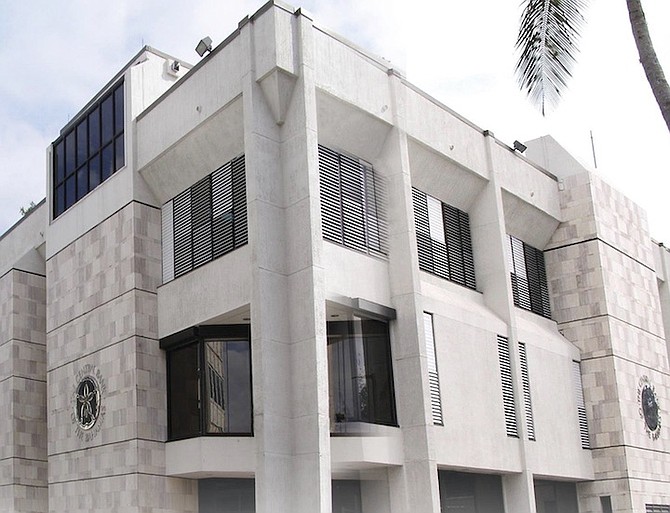By NEIL HARTNELL
Tribune Business Editor
nhartnell@tribunemedia.net
The Central Bank yesterday maintained its prediction that The Bahamas’ external reserves will end 2022 ahead of prior year levels even though October’s decline exceeded 2021 by some $58.3m.
The regulator, in its monthly economic developments report, signalled that the Bahamian economy has maintained its post-COVID recovery momentum as the traditional pre-Christmas drawdown on the reserves by retailers and others to finance festive season imports increased by 45 percent year-over-year.
“In line with the seasonal rise in foreign currency demand, external reserves decreased by $187.6m to $3.018bn in October, exceeding the $129.3m reduction in the same period last year,” the Central Bank said.
“Underlying this development, the Central Bank’s net sales to commercial banks widened to $96.1m from $57.4m in the preceding year. Likewise, the bank’s net foreign currency sales to the public sector expanded to $95m from $71.9m in 2021. Further, commercial banks net sales to their customers extended to $99.7m from $51.6 m in the prior year.”
All these are signs of a rebounding economy following the trauma inflicted by COVID-19. While the pre-Christmas drawdown on the external reserves is not surprising or unexpected, maintaining a healthy level is vital to the economy’s monetary soundness since these ultimately provide the key support for the one:one exchange rate peg with the US dollar.
The Central Bank, though, reiterated its previous forecast that the external reserves will close 2022 at a higher level than 12 months previously. “External reserve balances are forecasted to stay above the 2021 levels, notwithstanding some anticipated seasonal drawdowns over the remainder of 2022. As a result, external balances should remain more than adequate to sustain the Bahamian dollar currency peg,” it said.
“In light of the prevailing outlook, the Central Bank will maintain its accommodative stance for private sector credit and continue to pursue policies that ensure a favourable outturn for external reserves, and mitigate financial sector disruptions. Further, the bank will remain diligent in its monitoring of foreign exchange developments and, if necessary, adopt appropriate measures to support a positive outcome for the foreign reserves.”
Foreign currency outflows related to current account transactions increased by $265.2m or 56 percent to $737.8m in October compared to the same period in 2021. Credit and debit card transactions increased by $135.6m, while further outflows for non-oil and oil imports grew by $73.5m and $42.6m, respectively. Transfer payments grew by $6.9m, factor income remittances by $3.9m, and travel-related transactions by $2.7m.
As for the commercial banking system’s credit quality, the Central Bank said total private sector loan arrears declined by $7.4m or 1.2 percent to $629.6m in October. As a portion of total outstanding credit, loans in arrears fell by 12 basis points to 11.7 percent of the total.
“Disaggregated by average age of delinquency, non-performing loans (NPLs) contracted by $13.2m (3 percent) to $423.2m, lowering the associated ratio by 23 basis points to 7.9 percent,” it added. The Central Bank reported declines in non-performing consumer loans, which fell by 30 basis points to 6.5 percent of outstanding credit; mortgages by 13 basis points to 10.1 percent; and commercial loans by 32 basis points to 4.9 percent.
“In contrast, short-term arrears (31-90 days) grew by $5.8m (2.9 percent) to $206.4m, with the corresponding ratio higher by 11 basis points at 3.8 percent,” the regulator continued. “A breakdown by loan type revealed that mortgage arrears contracted by $6.9m (1.8 percent) to $385.6m, attributed to reductions in both the non-accruals and short-term segments by $4.2m (1.6 percent) and by $2.7m (2 percent), respectively.
“Similarly, consumer loan delinquencies fell by $0.7m (0.4 percent) to $183.7m, as the $6.3m (4.8 percent) decrease in the non-accruals component outstripped the $5.7m (11 percent) growth in the short-term category. Conversely, commercial arrears edged up by $0.2m (0.4 percent) to $60.3m, owing to a $2.9m (22.7 percent) uptick in short-term arrears, which overshadowed the $2.7m (5.6 percent) decline in the long-term component.
“In line with these developments, banks reduced their total provisions for loan losses by $41.8m (9.7 percent) to $387.7m in October. Consequently, the ratio of total provisions to arrears narrowed by 5.9 percentage points to 61.6 percent. Further, the ratio for total provisions to non-performing loans declined by 6.8 percentage points to 91.6 percent. During the review month, banks wrote-off an estimated $14.2m in bad loans and recovered approximately $4.9m.”





Commenting has been disabled for this item.